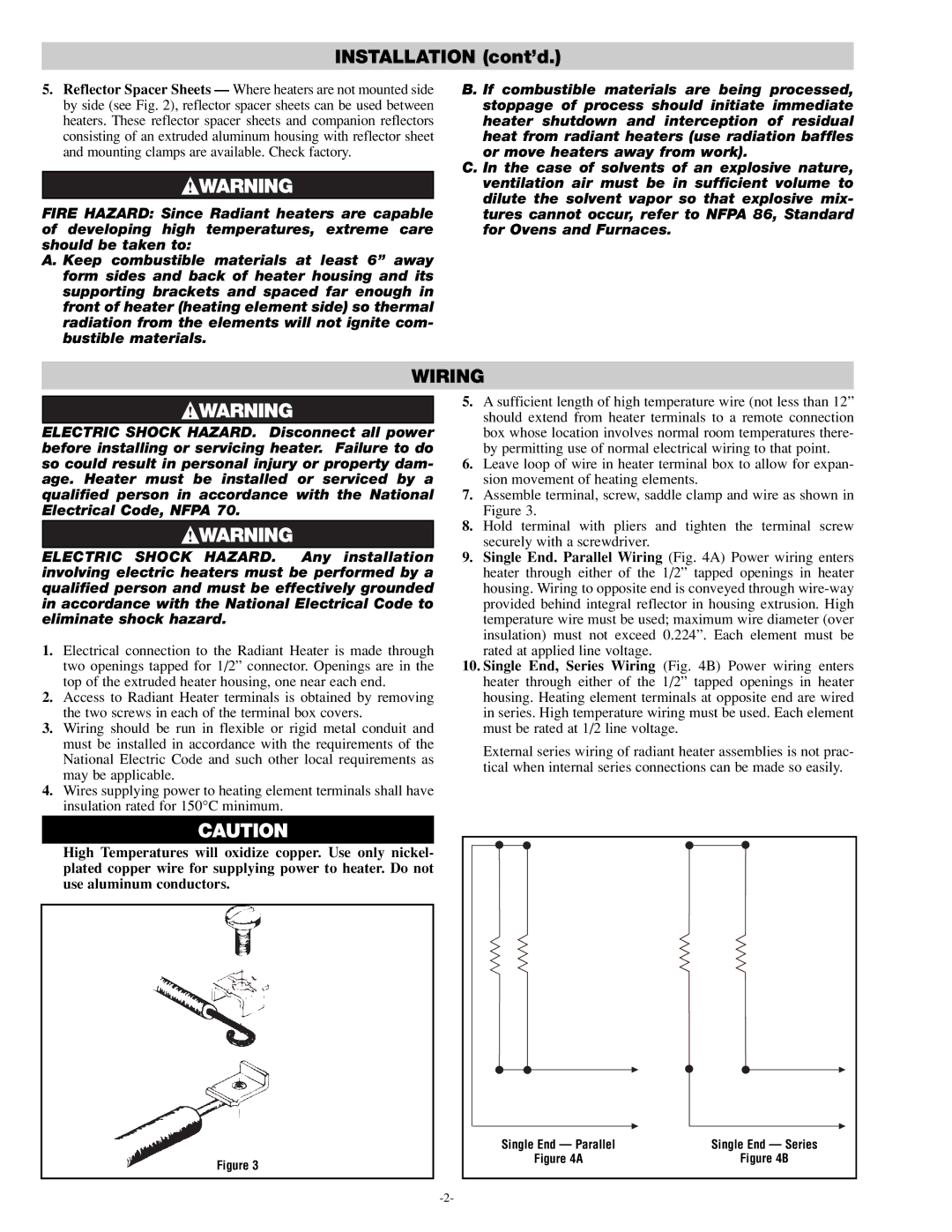PG412-10 specifications
The Chromalox PG412-10 is a highly versatile and efficient temperature control system designed for various industrial applications. This state-of-the-art unit is part of Chromalox’s commitment to delivering reliable heating solutions that offer outstanding performance, safety, and durability. The PG412-10 stands out with a host of main features that make it suitable for demanding environments.One of the key characteristics of the PG412-10 is its advanced digital control system. This integration allows for precise temperature management, ensuring that processes remain within specified parameters. The digital interface is user-friendly, facilitating easy adjustments and monitoring. This sophistication enables operators to maintain optimal performance across different applications, enhancing overall productivity.
In terms of technologies, the PG412-10 utilizes a powerful heating element that is designed to provide rapid heat-up times and consistent performance. The heating elements are made from high-quality materials that ensure longevity and reduce the risk of failure. This reliability is particularly important in critical industrial settings where downtime can lead to significant losses.
Safety is another paramount feature of the PG412-10. It is equipped with multiple fail-safes and alarms that protect against overheating and other potential hazards. These safety measures not only safeguard the equipment but also enhance operator confidence in using the system.
The PG412-10 is also designed for flexibility. It can be configured for different voltages and is compatible with various process fluids. This adaptability makes it suitable for applications in pharmaceutical manufacturing, food processing, and chemical production, among others.
Another notable characteristic is the compact design of the PG412-10, which allows for easy installation even in space-constrained areas. The unit's rugged construction ensures it can withstand harsh environmental conditions, making it a reliable choice for outdoor installations or demanding industrial environments.
In summary, the Chromalox PG412-10 is a cutting-edge temperature control unit that combines advanced technology, safety features, and flexibility. With its robust performance and user-friendly interface, it stands as an excellent solution for elevating industrial heating processes across various sectors, ensuring efficiency and reliability in temperature management.

